The Francis Scott Key Bridge in Baltimore, Maryland, was part of the I-695 highway system, the beltway around Baltimore, and when completed in 1977 it was 1.6 miles long. It was a steel truss bridge and the second longest of this type in the USA. The piers that supported the steel structure were made of concrete. The bridge spanned the Patapsco River near the Chesapeake Bay. The ships going to or coming from the Port of Baltimore had to pass under this bridge. The Port of Baltimore is among the twenty busiest ports in America.
On March 26, 2024, at 1:29 AM, the bridge collapsed as a result of a cargo ship, the MV Dali, striking one of the piers that supported the bridge. Baltimoreans and Marylanders (along with most of the world) woke up that day to learn that the Key Bridge was no longer there! Six persons died, but two were rescued. They were part of a work crew that was filling potholes on the bridge. In consequence of the collapse, the port of Baltimore was blocked to all maritime traffic. All road traffic was forced to go around the beltway. A 2-mile trip is now a 45-mile trip or a 20-mile trip when the tunnels are used. Heavy trucks or trucks with hazardous materials are prohibited in the tunnels.
In only eleven weeks, the pieces of the collapsed bridge were removed from the water and the Port of Baltimore was operational again. An incredible achievement!
The Kiewit Corporation has been engaged for a reconstructed bridge to be completed in 2028.
There are many articles and images on the Internet detailing the collapse and aftermath, but today let’s concentrate on the postcards related to the event.
Just days after the collapse, postcards were found online about the collapsed bridge. This follows a tradition from the early 1900s when many disasters were documented on postcards. However, the 2024 postcards were different in that most of them are an artistic rendition of what happened, or in solidarity with those who used the bridge. In the 1900s, most of the disaster postcards were RPPCs detailing the event in every step.
These first two cards show the bridge before its collapse. The card on the left is a view of the whole bridge by Bruce Emmerling – Harbor Images – Zazzle. On the right is a modern card showing how a ship sails under the bridge on the way to, or from, the Port of Baltimore, designed by jwhimages – Redbubble.
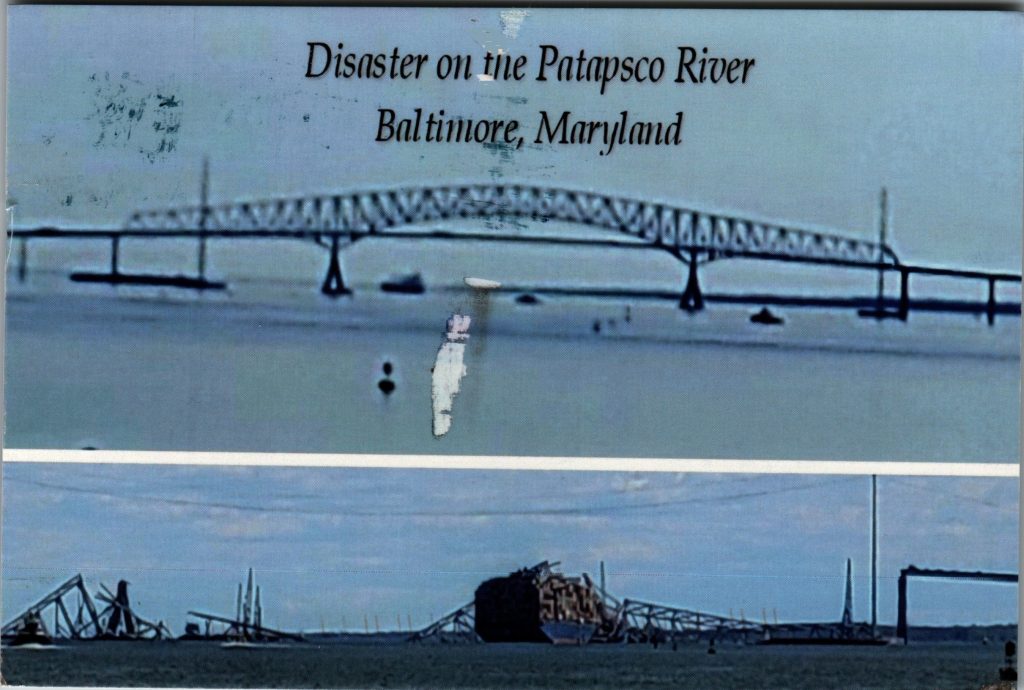
Iris Bazen Wingert, a collector of Baltimore postcards, produced this card showing a before-and-after view. She mailed these to all her friends. She also included a history of the tragedy as a caption.
Most of the cards found are artist designs (not just a photograph). A favorite is The Broken Bridge, designed by ShipOfFools – Redbubble. It has all the elements of this tragedy, the ship, the twisted metal, and the ghosts of the lost crew.
The card with the paraphrase of O Say Can You See, designed by Artoons-org – Redbubble, plays on the name of the bridge and its namesake, Francis Scott Key. Key was the author of a poem written while he was on a ship outside of Baltimore in 1812, that became our national anthem.
A few of these new postcards express the artist’s feelings for Baltimoreans in a sort of sympathy card kind of way. RIP Baltimore Bridge, above, was designed by Cainlm – Redbubble, and Baltimore Strong was designed by Lillarts – Redbubble).
The last category is somewhat bizarre as the artist forgot to check the type of bridge that collapsed. When Bridges Fall, designed by Cainlm – Redbubble is interesting as it is very elaborate and designed by the same artist as RIP Baltimore Bridge, but here the bridge does not look anything like the Key Bridge.
Francis Scott Key Bridge Baltimore, designed by Darlingstees – Redbubble) is quite sophisticated but again the bridge shape is wrong. This artist made a grand effort in the design of this card, but he/she had two major errors, the shape of the bridge and the initial date. The bridge’s permit was approved in June 1972 and as stated above it was opened in 1977.
The inclusion of a Black Swan is very interesting. Since Roman times, a black swan has symbolized an unpredictable or rare event, however it has changed slightly over the centuries.
Nevertheless, I have seen six postcards with a wrong bridge, but clearly stating Baltimore! I contacted the artists with the “wrong” bridges, and they acted surprised but did not edit their design. How hard can it be to check the shape of a bridge in the age of the Internet?
In the end, postcards are still designed and printed to commemorate disasters and major events, you just need to know where to look. There are over 40 postcards on this topic.
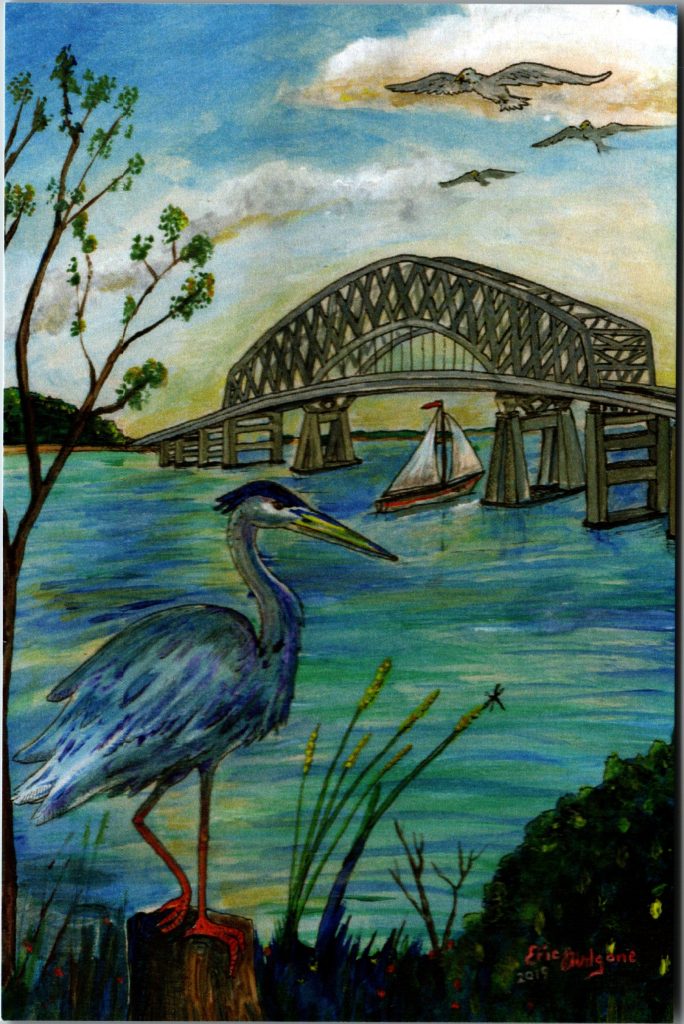
To finish here is an artistic view of the bridge before the collapse showing a once peaceful view of the bridge and its area, designed by Eric Ovelgone, DarkRubyMoon – Redbubble.
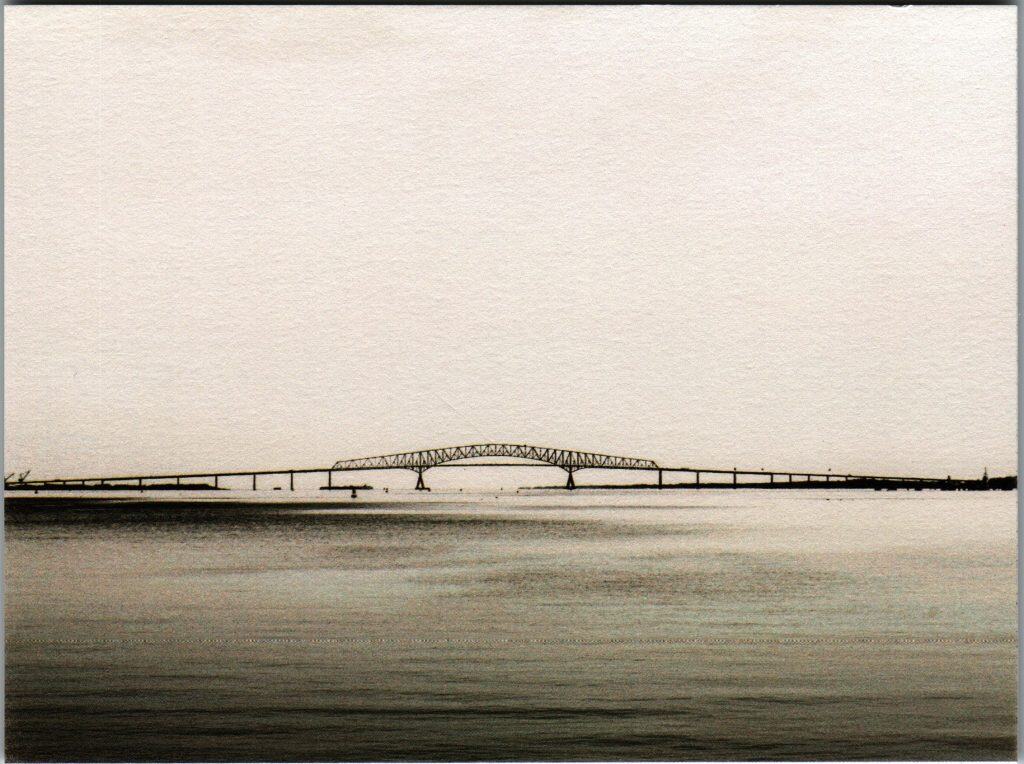
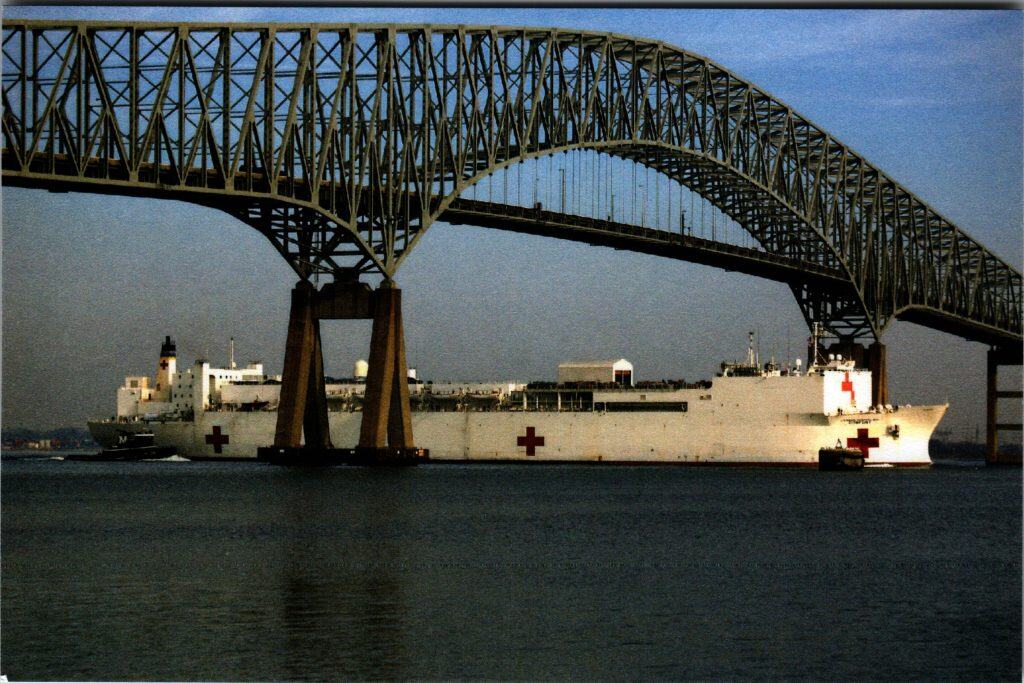
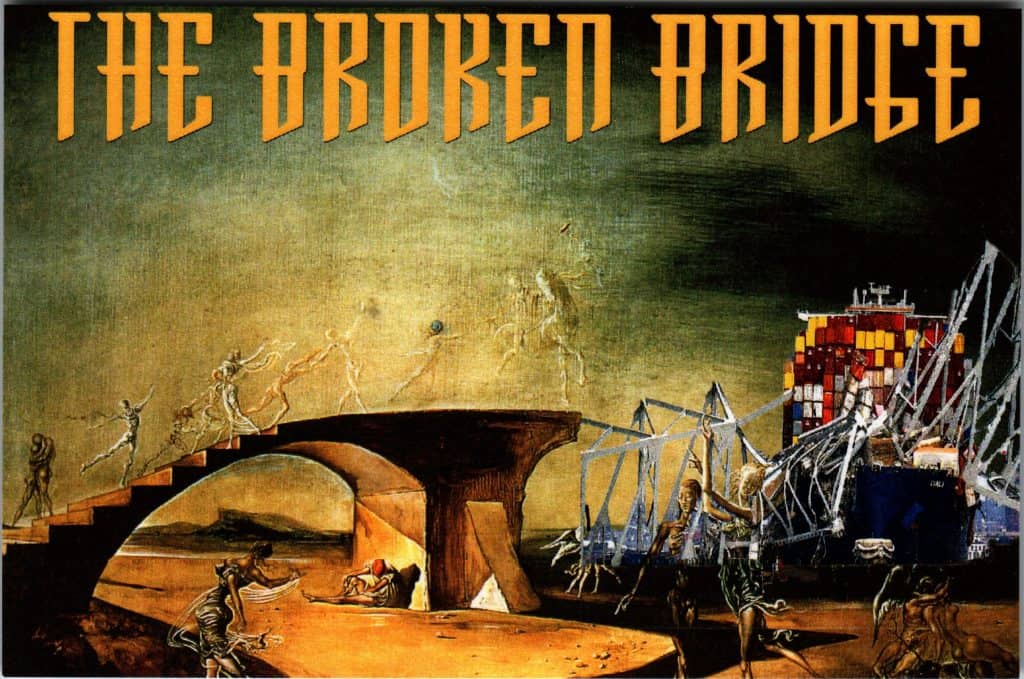
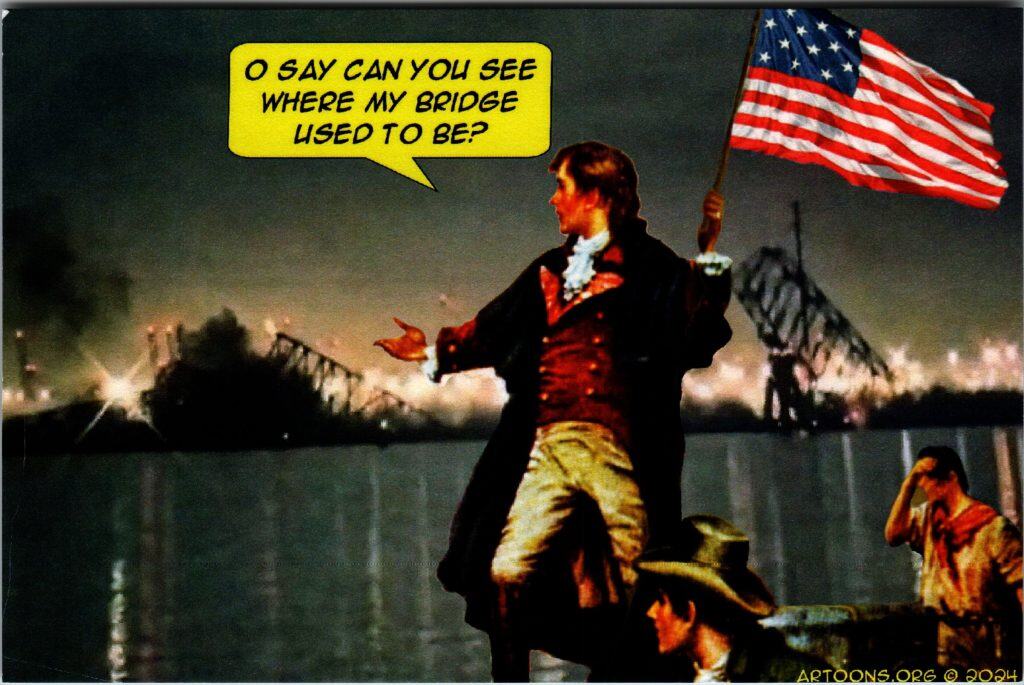
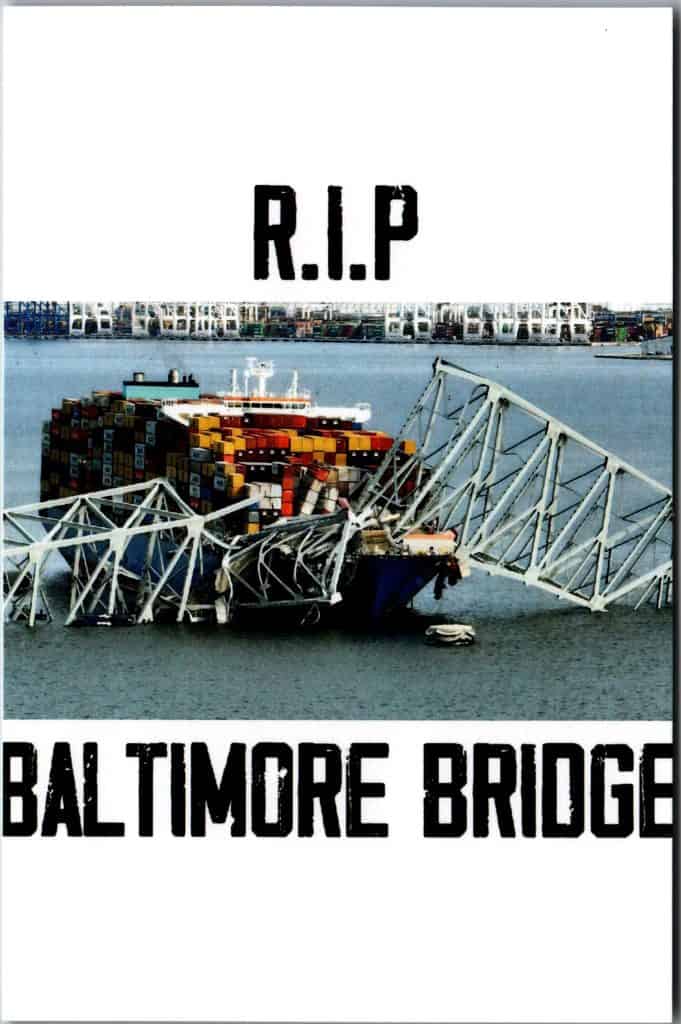
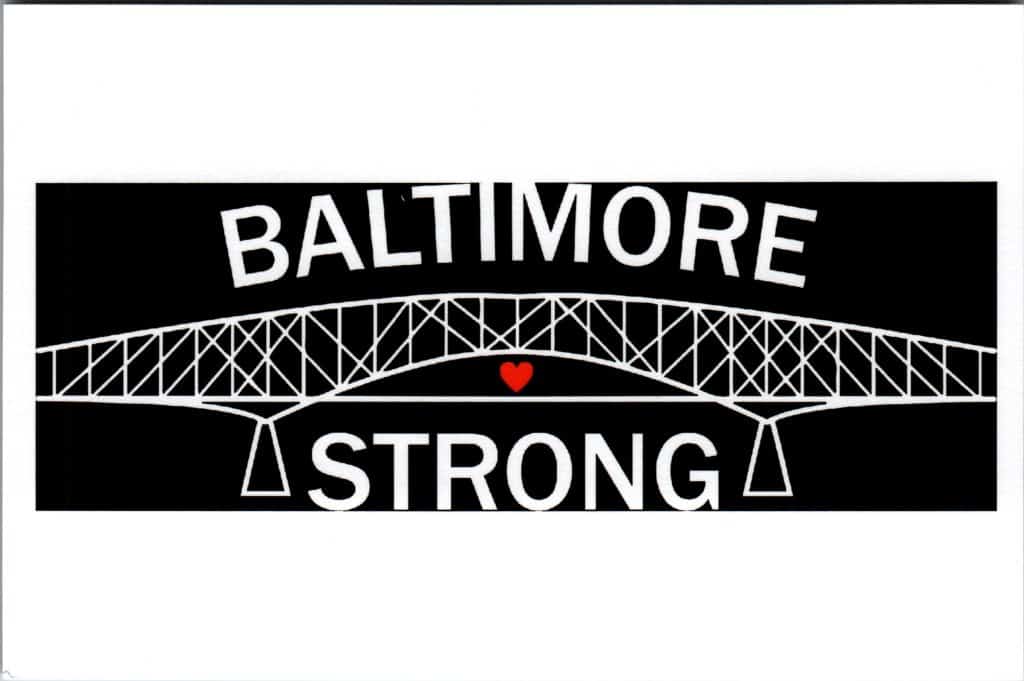
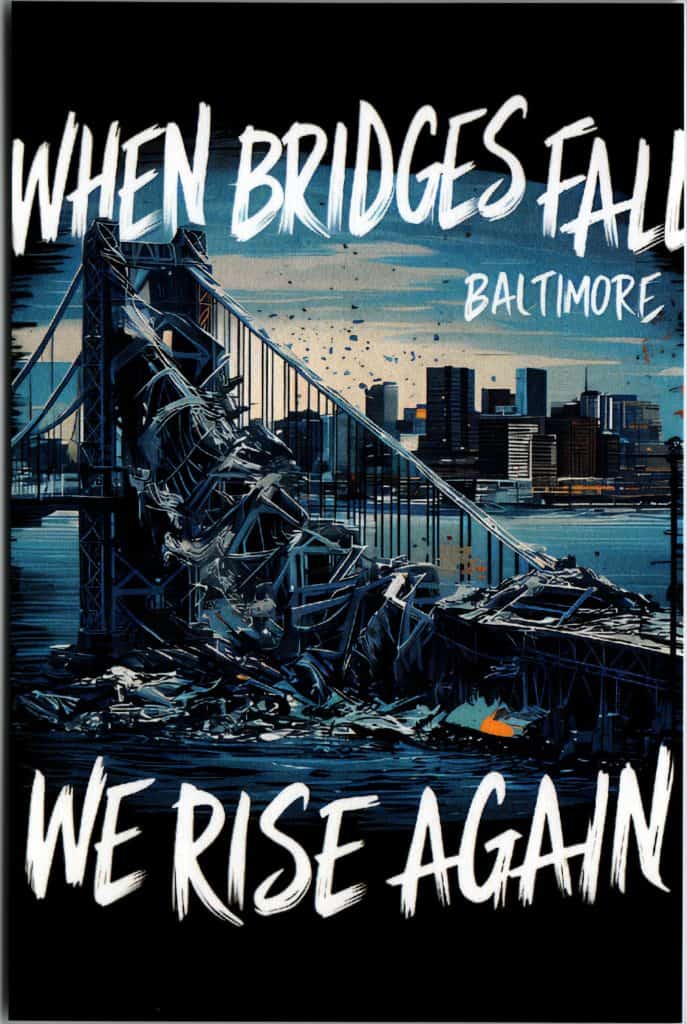
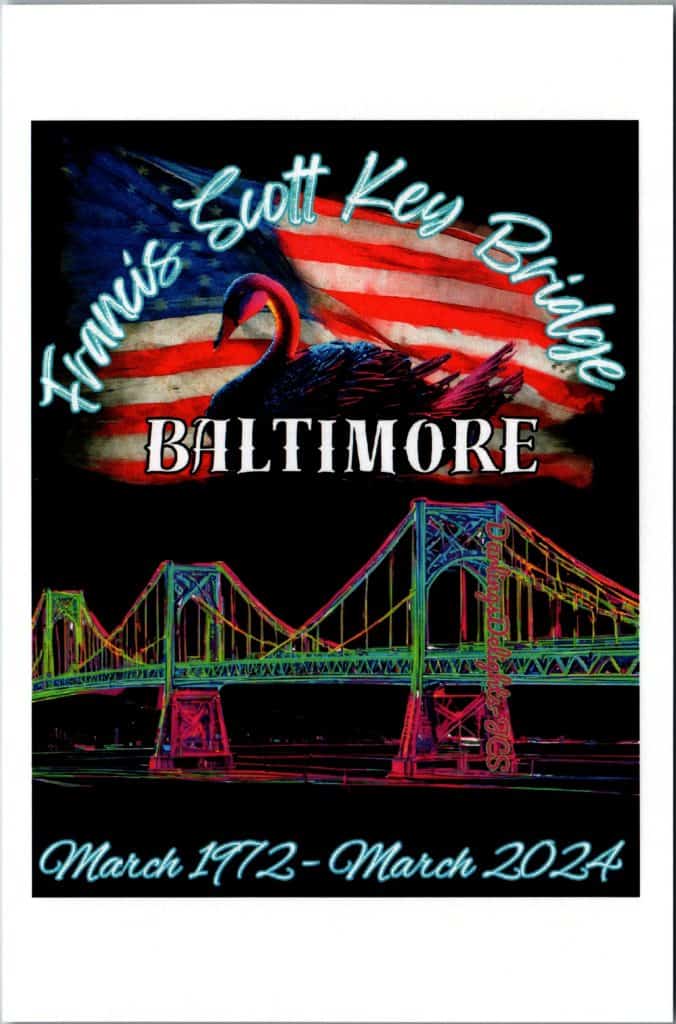
Great article about the disaster. I am a bit surprised too that any graphic artist or postcard designer would use the wrong bridge in their work.
I’m not surprised and that would make a good collection: postcards with the wrong landmark on them. I bet there are plenty and it would be an interesting challenge to find them — or has someone already done that?
The title of Key’s poem, as he spelled it, is “Defence of Fort M’Henry”.
I enjoyed this article. Thank you.
Informative article, enjoyed the observations about the connections between these postcards and traditional “disaster” postcards.
Because of the bird in the very last postcard, I think this might actually be the original skyway bridge over Tampa Bay before its collapse?? I don’t think this bird can be seen as far north as Baltimore.
The bird in the picture postcard is a great blue heron and is quite common in Central Maryland. Perhaps you are mistaking it for a pelican which would not be seen on the Patapsco River or elsewhere in the state of Maryland except in the Maryland zoo.
Great article. Very informative and well-illustrated and supported by interesting postcards.
I certainly echo Iris’s comment. Thank you for the work & research.
I meant to say in her last comment – I know nothing about birds.